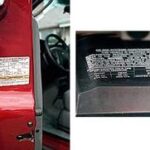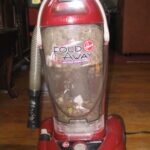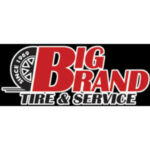If you want to run “pure” nitrogen in your tires you’ll have to do a little more than just have them filled at the local tire dealer. The un-mounted tire already holds 14 psi of air when it goes on your wheel. So unless the tire dealer mounts your tire in a vacuum (which is unheard of) the purest percentage of nitrogen you can possibly have (in your tire) is around 86% after mounting. And this 86% is only if the tire is filled with “pure” industrial grade nitrogen.
Tires that are filled with air are already running 78% nitrogen as it is. The remainder of what’s in the tire is 19-20% oxygen, and the remainder is gases. So if you change over to nitrogen you’re only going to possibility gain 8% of nitrogen if you’re lucky.
Benefits of Nitrogen Filled Tires
Using nitrogen in tires has now become common practice in the tire replacement market. This is another service the tire dealers offer in order to generate more money, while also promoting safety at the same time. This is not a new concept; this idea has been kicked around since the mid seventies.
The benefit of using nitrogen includes: the potential for reducing air loss, helps in preventing tires from overheating, and promotes optimal tread life. Along with this is also reported a 3.0 percent gain in fuel mileage (in some vehicles). Nitrogen also reduces rubber aging (on the inside) and lessons wheel erosion.
The National Highway Traffic Safety Administration (NHTSA) has “seen reduced aging of tires filled with nitrogen.” But the manufacturers say that “they don’t see the need to use nitrogen,” which usually cost around five dollars a tire to switch over to nitrogen.
Airplanes, race cars, and the military use nitrogen, so why shouldn’t we? The main reason the military uses nitrogen is because it is inert. It does not promote corrosion and poses no combustible hazard. The military’s SR-71 runs 600 psi in its tires. A blown tire with a hot wheel well could cause a serious fire, and nitrogen plays a part in quenching this fire.
The life of the tire is air pressure along with balancing and rotation. Oxygen is also several times more soluble in rubber than nitrogen. This causes the tire to break down along with heat; which then cases “water vapor.”
This water vapor is where the rub begins. Less heat in the tire is generally good for tire wear and durability. Therefore, it’s better on the tire (on the inside) to have “less water permeating it, while the tire is working and getting hot; due to the flex of the tire while driving.”
Industrialized nitrogen not only has less oxygen than air it also has less water vapor; here is the water vapor again. The properties of nitrogen are not really much different than oxygen. Nitrogen has an atomic weight of 14, 7 protons, and oxygen’s atomic weight is 16, 8 protons; both turn from liquid to gas at 298K.
A test was started on September 20th 2006 and tires were filled with both oxygen and nitrogen. These tires were all filled in a vacuum with no other gases. On September 20th 2007 final results and measurements were taken. The results showed nitrogen did reduce pressure loss over the oxygen tire. The oxygen tire lost 3.5 psi while the nitrogen tire lost 2.2 psi. The most important factor of this test is that they both lost pressure regardless of what was in the tire.
In the end the choice is yours. Unless you’ve got a fleet of airplanes, race cars or SR-71’s you’re probably okay with what you’re using now. Although nitrogen would really pose no big hassle if you had it replaced when you rotated your tires.
Between rotations you could always top off your tire pressure with air if you had trouble finding nitrogen. Adding air to the nitrogen tire has “no” effect on the steering or balance of the car; as it is already somewhat mixed anyway.
If in fact nitrogen is lighter than oxygen, maybe we should start using helium in our tires; it’s even lighter than nitrogen.
Sources of information:
www.scientificamerican.com/article.cfm?…nitrogen–filled–tires…
www.bargaineering.com/…/nitrogen–filled–tires-better-gas-mileage.html
www.sptimes.com/2005/09/28/…/Nitrogen_in_your_tire.shtml




